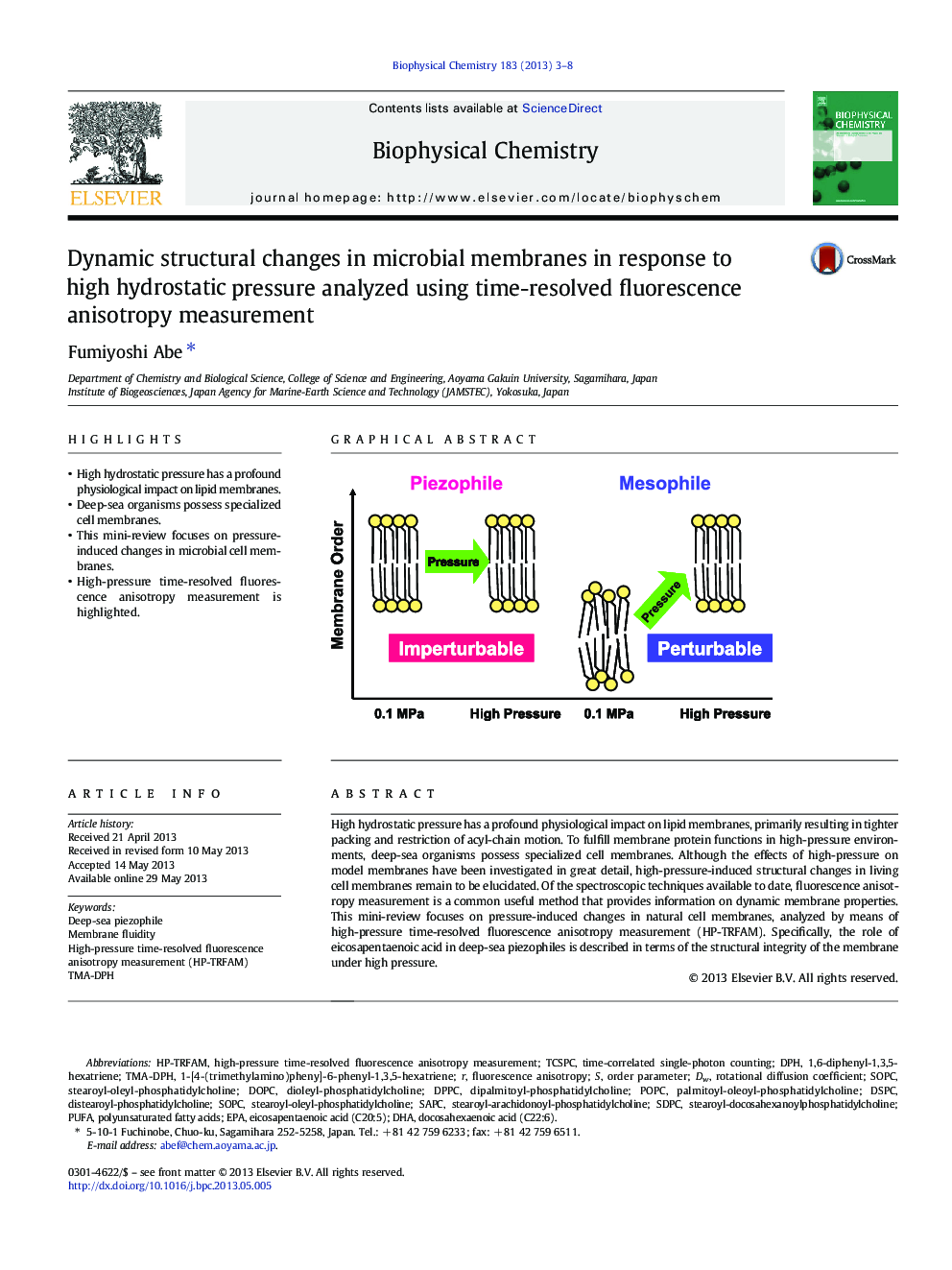| Article ID | Journal | Published Year | Pages | File Type |
|---|---|---|---|---|
| 5371051 | Biophysical Chemistry | 2013 | 6 Pages |
â¢High hydrostatic pressure has a profound physiological impact on lipid membranes.â¢Deep-sea organisms possess specialized cell membranes.â¢This mini-review focuses on pressure-induced changes in microbial cell membranes.â¢High-pressure time-resolved fluorescence anisotropy measurement is highlighted.
High hydrostatic pressure has a profound physiological impact on lipid membranes, primarily resulting in tighter packing and restriction of acyl-chain motion. To fulfill membrane protein functions in high-pressure environments, deep-sea organisms possess specialized cell membranes. Although the effects of high-pressure on model membranes have been investigated in great detail, high-pressure-induced structural changes in living cell membranes remain to be elucidated. Of the spectroscopic techniques available to date, fluorescence anisotropy measurement is a common useful method that provides information on dynamic membrane properties. This mini-review focuses on pressure-induced changes in natural cell membranes, analyzed by means of high-pressure time-resolved fluorescence anisotropy measurement (HP-TRFAM). Specifically, the role of eicosapentaenoic acid in deep-sea piezophiles is described in terms of the structural integrity of the membrane under high pressure.
Graphical abstractDownload full-size image
